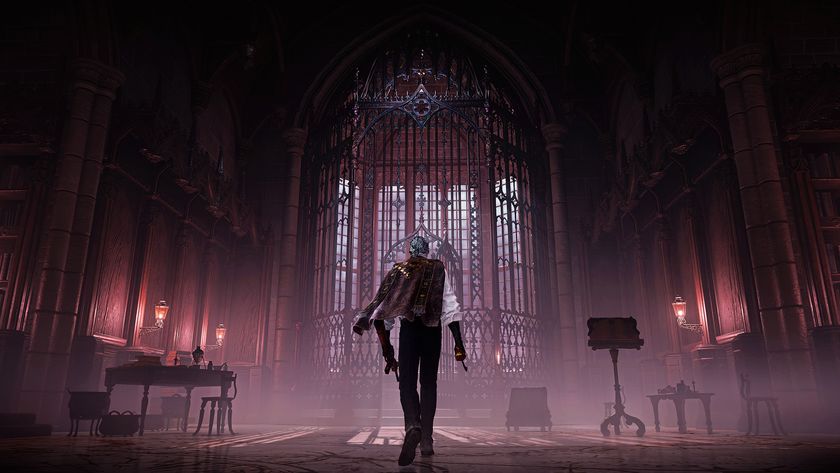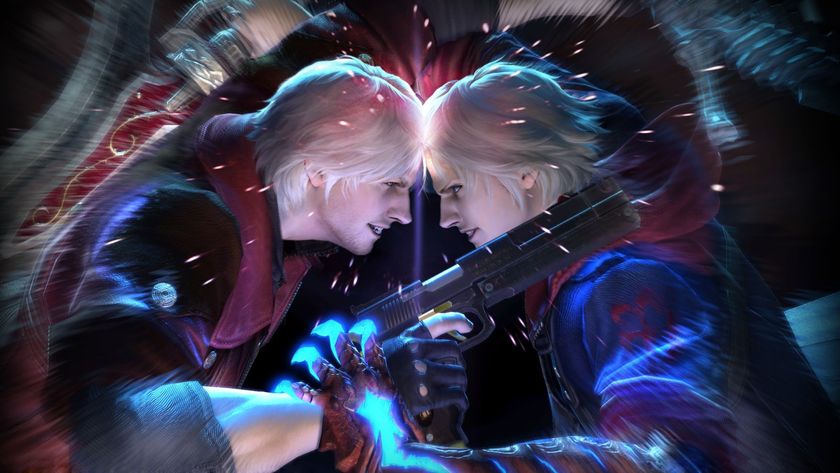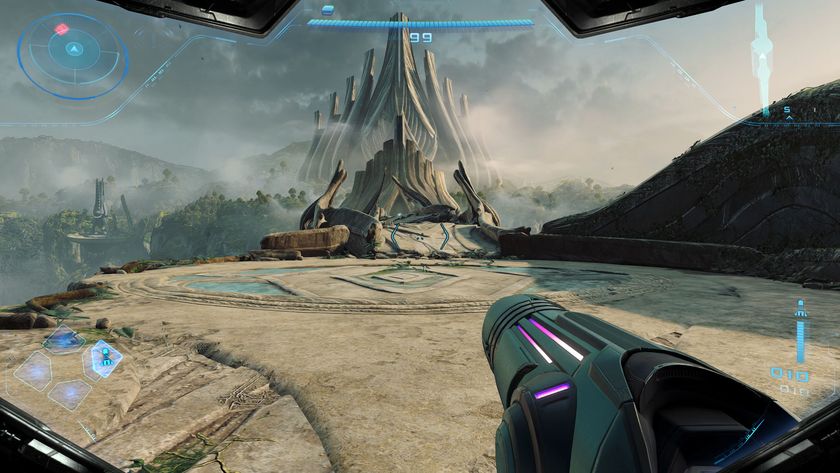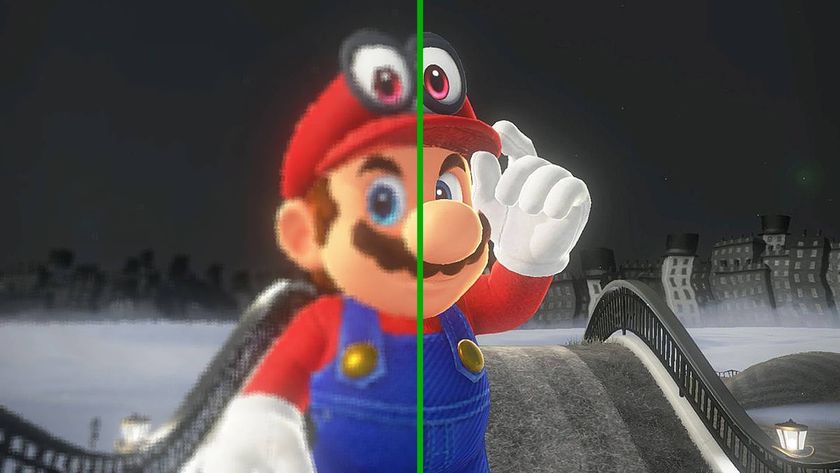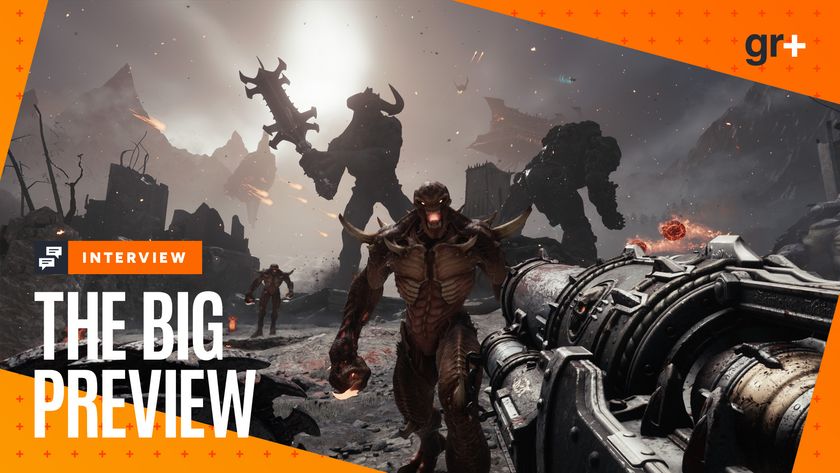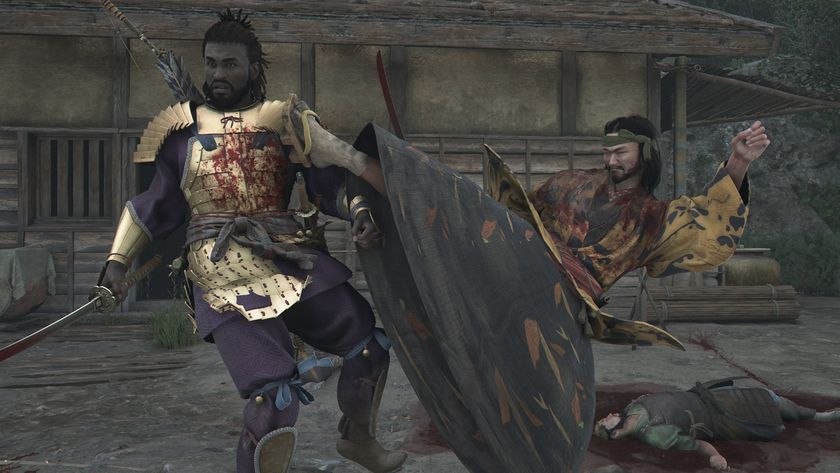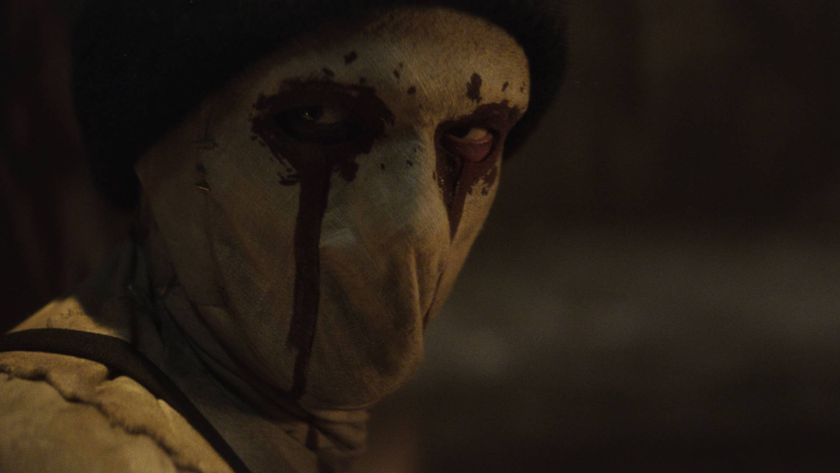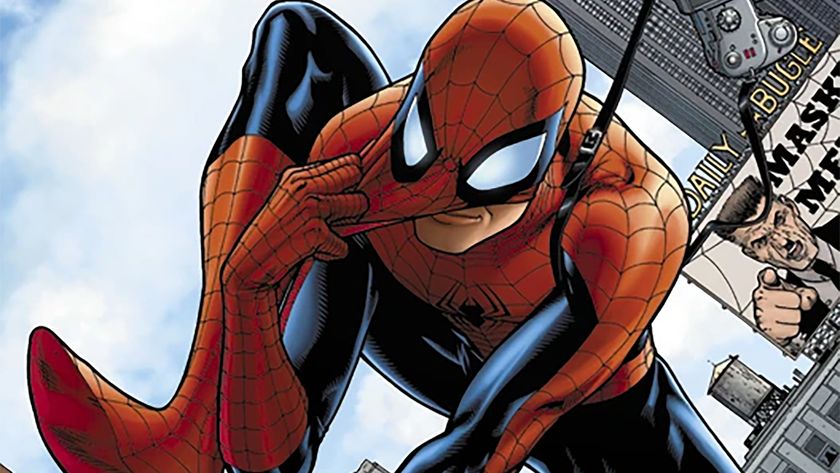Tom Clancy's Splinter Cell: Conviction - hands-on
Two men, one co-op: taking the stealth online
Yastreb Complex, then. Having C-4ed a bit of wall, we slither into a loading bay area shrouded in darkness. The objective is to find and interrogate one Major Rebko, and my partner in this spy thriller is Patrick Redding, game director for Conviction’s multiplayer game and in possession of the kinds of skills that only come of having demonstrated the game a thousand times.
As in the single-player game, “marking and executing” is your most effective means of shoveling out death, and to illustrate Redding effortlessly marks three patrolling guards who immediately appear on my HUD as hovering arrows. In response I clamber up a pipe. Desperate to look like I know what I’m doing up in my lofty perch, I mark three more men. All six are within our collective field of vision, and should we decide to, we may dispatch them with clinical precision.
Yastreb Complex, then. Having C-4ed a bit of wall, we slither into a loading bay area shrouded in darkness. The objective is to find and interrogate one Major Rebko, and my partner in this spy thriller is Patrick Redding, game director for Conviction’s multiplayer game and in possession of the kinds of skills that only come of having demonstrated the game a thousand times.
As in the single-player game, “marking and executing” is your most effective means of shoveling out death, and to illustrate Redding effortlessly marks three patrolling guards who immediately appear on my HUD as hovering arrows. In response I clamber up a pipe. Desperate to look like I know what I’m doing up in my lofty perch, I mark three more men. All six are within our collective field of vision, and should we decide to, we may dispatch them with clinical precision.

They’ve called this, simply enough, ‘Dual Mark and Execute’. Executions are rapid-fire, auto aimed fatal shots, available only once you’ve engaged in melee with an enemy (in this way, you’re restricted from using the powerful one-hit-kill move against every guard you encounter). In co-op, executions become grandly choreographed, synchronous events. When one of us triggers an execution, time slows to allow the other player to begin theirs, and the end result is a room of six guards dropping to the floor before they realize what’s happening.
Stylish, efficient, and visually elegant, it’s a spectacle that’s rationed throughout the level, requiring co-ordination and (whaddya know) co-operation to pull off. Lone executions are still an option, naturally, as is the ability to execute targets marked by another player. The potentially intrusive time dilation only comes into effect if both players have the opportunity to simultaneously perform an execution, otherwise it’s carried out on the crack of a whip.
Yastreb Complex, along with every inch of the co-op campaign, is built from the ground up to be tackled by a duo. Multiple routes are nearly always available, and enemies often appear in formations that require they be taken out simultaneously – either hawkishly watching one another’s backs or moving in patterns that can be identified and relayed to your fellow player. As we approach our objective, myself and Redding are made to rely on communication and co-ordination. The complex’s office floor, replete with scalable partition walls and a crawl-space above the ceiling tiles, tests our abilities to work in tandem.
Sign up to the 12DOVE Newsletter
Weekly digests, tales from the communities you love, and more
Redding hoists himself up into the maze of asbestos-riddled ceiling tiles and switches to his sonar goggles to highlight enemies below. I creep, otherwise blind to what’s around the next corner, from cubicle to cubicle while my teammate barks warnings and instructions: “Wait at that corner”, “The guards are chatting, move now”, “Quick, vault over that photocopier all awesome-like”. Inside, though you’d never admit it, you feel that maybe this is how real spies talk to one another. On some childish level, Conviction’s co-op is the authentic espionage experience.
When it all goes tits up though, and we’re both unable to carry out our swanky execution moves, Redding starts firing silenced shots through the ceiling tiles, a mysterious deadly hail falling on the unwitting guardians of the office. Taking aim at the light fittings, I plunge the room into darkness and turn the tide of battle back in favor of the men with the sonar-goggles. This is when the choke hold happens, I’m grabbed from behind and my perilous incompetence is flagged up on Redding’s screen. It’s the Splinter Cell equivalent of being Smokered in Left 4 Dead, or incapacitated in Modern Warfare, and Redding’s reaction – to circle around and twist the man’s head off – cements the spirit of the co-operation in a manner familiar to you if you’ve played either of those games.
They’ve called this, simply enough, ‘Dual Mark and Execute’. Executions are rapid-fire, auto aimed fatal shots, available only once you’ve engaged in melee with an enemy (in this way, you’re restricted from using the powerful one-hit-kill move against every guard you encounter). In co-op, executions become grandly choreographed, synchronous events. When one of us triggers an execution, time slows to allow the other player to begin theirs, and the end result is a room of six guards dropping to the floor before they realize what’s happening.
Stylish, efficient, and visually elegant, it’s a spectacle that’s rationed throughout the level, requiring co-ordination and (whaddya know) co-operation to pull off. Lone executions are still an option, naturally, as is the ability to execute targets marked by another player. The potentially intrusive time dilation only comes into effect if both players have the opportunity to simultaneously perform an execution, otherwise it’s carried out on the crack of a whip.
Yastreb Complex, along with every inch of the co-op campaign, is built from the ground up to be tackled by a duo. Multiple routes are nearly always available, and enemies often appear in formations that require they be taken out simultaneously – either hawkishly watching one another’s backs or moving in patterns that can be identified and relayed to your fellow player. As we approach our objective, myself and Redding are made to rely on communication and co-ordination. The complex’s office floor, replete with scalable partition walls and a crawl-space above the ceiling tiles, tests our abilities to work in tandem.
Redding hoists himself up into the maze of asbestos-riddled ceiling tiles and switches to his sonar goggles to highlight enemies below. I creep, otherwise blind to what’s around the next corner, from cubicle to cubicle while my teammate barks warnings and instructions: “Wait at that corner”, “The guards are chatting, move now”, “Quick, vault over that photocopier all awesome-like”. Inside, though you’d never admit it, you feel that maybe this is how real spies talk to one another. On some childish level, Conviction’s co-op is the authentic espionage experience.
When it all goes tits up though, and we’re both unable to carry out our swanky execution moves, Redding starts firing silenced shots through the ceiling tiles, a mysterious deadly hail falling on the unwitting guardians of the office. Taking aim at the light fittings, I plunge the room into darkness and turn the tide of battle back in favor of the men with the sonar-goggles. This is when the choke hold happens, I’m grabbed from behind and my perilous incompetence is flagged up on Redding’s screen. It’s the Splinter Cell equivalent of being Smokered in Left 4 Dead, or incapacitated in Modern Warfare, and Redding’s reaction – to circle around and twist the man’s head off – cements the spirit of the co-operation in a manner familiar to you if you’ve played either of those games.
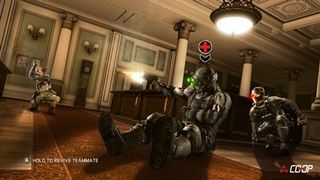
Above: Your teammate can also revive you when you’re down
Interrogations appear in co-op too, and much like in the single-player, they employ “contextual bash points” in the environment, that is, you can pin an interrogatee’s hand to a tree with a knife, or smush his face into a photocopier until both are shattered and covered in toner, depending on where you take him. Both players can have a go at hurting a man until he talks, with one doing the grabbing and shaking while the other keeps an eye out for reinforcements.
In its current form, however, the implementation feels odd. On the Yastreb Complex level, Major Rebko flops petulantly to the floor in between snippets of information in order to allow the other player an opportunity to “have a go”. And the role of scouting during the interrogation is pointless, as backup never arrives until you’ve progressed by completing the scene.
Steve Hogarty is a London-based freelance journalist covering games and technology. His bylines have appeared in publications including GamesRadar, The Independent, Yahoo, VICE, Eurogamer, and more. He is also the co-host of the pocast, Regular Features.

